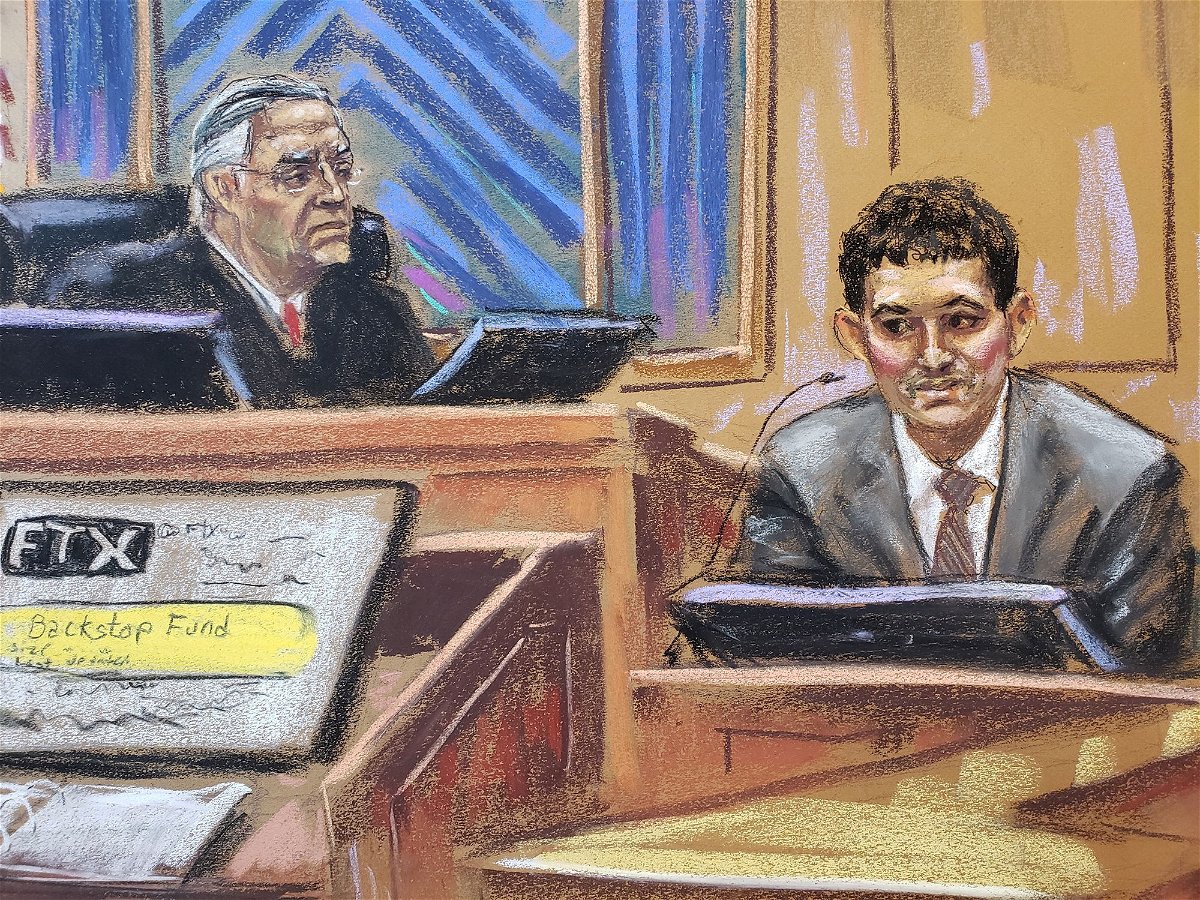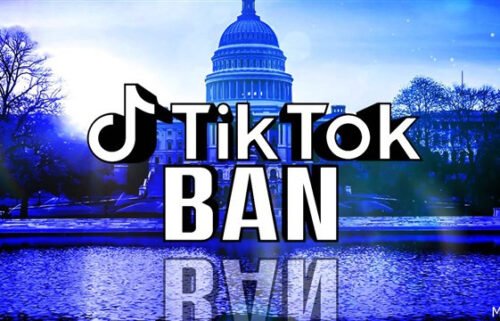Key takeaways from Sam Bankman-Fried’s first days on the witness stand

Judge Lewis Kaplan watches as FTX founder Sam Bankman-Fried testifies in his fraud trial over the collapse of the bankrupt cryptocurrency exchange
New York (CNN) — Former crypto billionaire Sam Bankman-Fried took the stand in front of a judge and jury last week in his criminal fraud trial. If convicted on all seven fraud counts he faces, the 31-year-old could spend the rest of his life in prison.
Prosecutors claim that Bankman-Fried’s crypto exchange, FTX, “was built on lies,” and that he took money from customers to enrich himself and his family, buy luxury beachfront property in the Bahamas and funnel millions into US political campaigns.
Bankman-Fried’s lawyers argue that their client, like many entrepreneurs, was “building the plane as they were flying it” and that “it’s not a crime to be the CEO of a company that later files for bankruptcy.”
After a full day on the witness stand Friday, the disgraced former CEO is expected to return for another day of testimony on Monday.
Here’s what we’ve learned so far.
He was always too busy to get a hair cut
Sam Bankman-Fried’s casual wardrobe and wild curly hair were a subject of discussion in court on Friday.
Caroline Ellison, Bankman-Fried’s ex-girlfriend and the former CEO of sister company Alameda Research, testified earlier this month that Bankman-Fried’s style was part of a marketing strategy to look like an eccentric startup founder. Bankman-Fried’s lead attorney Mark Cohen sought to undermine that.
“Why did you wear the shorts and T-shirts?” Cohen asked.
“I found them comfortable,” Bankman-Fried replied.
Cohen also asked about the famous mop of unruly dark hair.
“I was kind of busy and lazy and didn’t bother getting a haircut for long periods of time,” Bankman-Fried said.
Overall, Bankman-Fried said he never intended to be the public face of FTX. It was “an accident” at first, he told the court.
“I hadn’t intended to be a public face of anything,” he said, adding that he is “somewhat introverted.”
He says he didn’t know about Alameda’s back door
Bankman-Fried’s testimony has so far underscored his view that other executives at FTX and Alameda often acted independently, without direct oversight from Bankman-Fried, who was the CEO of both companies for a time.
“Ultimately, I had authority,” he said. “On the other hand, I wasn’t much of a programmer,” and didn’t directly supervise the work of developers who were building FTX’s code.
Bankman-Fried is essentially saying that he wasn’t aware of the so-called back door that Alameda used to withdraw FTX customer funds — a key issue in the case.
“I wasn’t entirely sure what was happening,” Bankman-Fried said.
Prosecutors allege that Bankman-Fried built a “back door” into FTX’s accounting system, allowing him to alter the company’s financial records without tripping accounting red flags. Bankman-Fried is being accused of using this “back door” to transfer billions of dollars in FTX customer funds to Alameda.
He initially thought FTX would fail
When Bankman-Fried and Gary Wang started FTX in 2019, there were already dozens of crypto exchanges. However, Bankman-Fried said Friday he felt their “design philosophies” were “clunky” and “didn’t make a lot of sense.”
“If you wanted to trade, there were hundreds of wallets you had to manage for a single account,” he said. The goal of FTX was to set up an exchange that was more seamless and approachable for traders.
He said he initially envisioned quickly selling FTX to cryptocurrency exchange Binance, since he “had no idea how we would get customers.”
However, Binance ended up using an internal team to build out its own exchange platform. And the more he thought about it, Bankman-Fried said, the more he became convinced that he could grow FTX despite the challenge of attracting customers.
It began to feel “less hopeless, like maybe we could figure it out,” SBF said.
“I thought there was maybe a 20% chance of success,” and an 80% chance it would shut down after a few months, he told jurors. “Even that 20% chance was a huge opportunity, given that the biggest exchanges at the time were multibillion-dollar companies.”
He didn’t want the FTX Arena in Kansas City
When shopping for an arena with which FTX could launch a brand partnership, Bankman-Fried testified Friday that his company had talks with a few different sports venues.
Eventually, they settled on the home of the Miami Heat, in what was reported to be a $135 million, 19-year deal, renaming the American Airlines Arena as FTX Arena.
Venues that didn’t work out at the time included football stadiums for the New Orleans Saints and the Kansas City Chiefs, as well as the Kansas City Royals’ baseball stadium.
“No offense to the Kansas City Royals, but we didn’t want to be known as the Kansas City Royals of crypto exchanges,” SBF said Friday afternoon.
The FTX Arena was later renamed the Kaseya Center, following the company’s collapse last fall.
The judge doesn’t like the way SBF answers questions
Judge Lewis Kaplan expressed exasperation with some of Bankman-Fried’s meandering answers, noting at one point: “The witness has what I’ll simply call an interesting way of responding to questions.”
When questioned by his own attorneys, Bankman-Fried appeared confident and upbeat. But he grew increasingly agitated when grilled by prosecutors.
Under cross-examination on Thursday, he frequently gave vague answers in which he said he was “not entirely sure” or didn’t recall past conversations about company policies and meetings with lawyers.
At one point, Kaplan interjected, urging Bankman-Fried to “listen to the question, and answer the question directly.”
In response to questions from Assistant US Attorney Danielle Sassoon, Bankman-Fried said, variously: “I am giving you my best guess at answering the question,” “I am going to answer what I think the question you are asking is, but I apologize if I’m answering the wrong question” and “I wouldn’t phrase it that way. But I think that the answer to the question I understand you to be trying to ask is ‘yes.’”
When asked if he could “point out to us where in this agreement you think Alameda is permitted to spend FTX customer funds,” Bankman-Fried replied:
“So I should preface this by saying I’m not a lawyer. I’m not giving a legal interpretation of this. I’m just giving, as best I can, what my memory is. And the parts of this that jibe with that, I, you know — I’m not trying to give a definitive legal ruling on what this does or doesn’t say. I’m not sure that I would quite answer yes to the question as you most recently phrased it. I’m going to try as best I can to give the answer that I believe, which is that, at least as I remember understanding it at the time, FTX either itself or I think as actually happened, without FTX as an intermediary, customers’ fiat funds would be sent to Alameda bank accounts, FTX would retain, effectively, a debt from Alameda for those and a lien on Alameda’s assets as security for that ongoing liability, that it would be repayable on direction from FTX in the return section here, and in the payment directive section; and that the provider could hold or transfer the funds as laid out in the FTX assets section unless or until directed to return them to FTX.”
The-CNN-Wire
™ & © 2023 Cable News Network, Inc., a Warner Bros. Discovery Company. All rights reserved.



